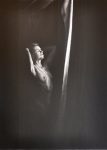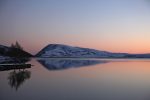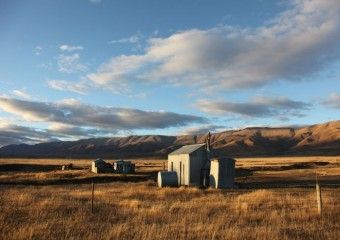Sir Grahame Sydney
For background on the artist and works, see below.
Current Works
About the Artist
Over decades of exhibiting, Sir Grahame Sydney has become celebrated as the definitive painter of Central Otago: its vast hinterland spaces, endless skies and folded mountains, dwarfing human occupation and existence. There is a surreal quality, an ineffable tension, to these dramatic paintings which have made his body of work iconic. Now, he’s moved on. Not from Central Otago, where he still lives and works, but in subject and artistic quest. His paintings are only rarely exhibited for sale, with a waiting list for his work. The lithographs he produced periodically are equally sought after, but remain affordable and very collectible.
Recent Works
Photographs: Sir Grahame Sydney turned his lens once again to Central Otago in his series of limited edition photographs; capturing the essence of what anchors him to this region in images of the last light on the landscape, of areas whose sustainability is under threat. Just a few of the photographs are available, printed on archival paper, please enquire. The minimalist Central Otago photographs evolved out of Sir Grahame Sydney’s Antarctic photographs which pursued a point at which a shift in tone or light is last discernible, often at dawn or dusk. Sydney didn’t set out to test the technical limits of the camera, but the limits of the light and creativity. “It is my hope that when people study these rather minimal images they still find the unmistakable ‘Sydney’ manner and style.” His work is held in national collections including Te Papa Tongarewa (the Museum of New Zealand) and in international private collections.
More About the Artist
Sir Grahame Sydney was born in Dunedin in the South Island of New Zealand in 1948. He graduated Bachelor of Arts in 1969 and began his full time art career in 1974 after a period of teaching and overseas travel. He was Frances Hodgkins Fellow at the University of Otago in 1978, and exhibited widely throughout New Zealand, also in Sydney and London, since 1969. A major retrospective of his work, On The Road, toured New Zealand public art galleries from 2000-2002. Until Antarctica, his focus was almost exclusively on Central Otago and southern New Zealand and his intimate knowledge underscores the power of his paintings. He remains best known for his finely realist and iconic paintings, and as art critic Keith Stewart says: “you don’t just see the land here, you feel it”. Sir Grahame Sydney is also well known for strikingly beautiful printmaking, particularly figure studies, and has worked in egg tempera, watercolours, oils, lithography and etchings. Major publications on his work, including The Art of Grahame Sydney and Timeless Land, have won prominent book awards.
Please contact us to confirm current prices: most prices are posted at the time of exhibition, and may be revised as the artists' values increase.



